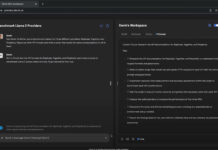IBL News | New York
The future of the university as we know it is under threat, says a report from EY (Ernst & Young). This research recommends that to survive, universities take a “future-back” approach, looking to 2030, reinvent themselves by setting a radical transformation in the operating models. Disruption from temporary remote learning may be just the tip of the iceberg.
The report, titled Are universities of the past still the future?, highlights that challenges thrown by the COVID pandemic could rapidly develop into existential threats for universities. Leaders from institutions in the US, UK, India, Singapore, and Australia participated in the research.
“Technology will continue to change the game across the higher education sector and universities need to start thinking and planning now for how they’re going to address the need for reinvention and fit into the post-secondary and lifelong learning landscape of the future,” said Catherine Friday, EY Global Education Leader.
EY adds five bold scenarios:
• “Universities must use digital learning experiences to augment what makes them unique and reinvent their learning delivery around that to meet the needs of tomorrow’s students and lifelong learners.”
• “Universities need to recognize that the power is shifting rapidly into the hands of the learner. Therefore, they need to provide the type of personalized, flexible learning options that students desire.”
• “Universities have lost their monopoly on accreditation, and non-degree, lifelong-learning credentials are becoming mainstream. Universities have to prepare for a world where location or brand reputation is less important to learners than the measurable quality and effectiveness of their teaching and learning outcomes in helping learners reach their individual career and life aspirations.”
• “Research is the lifeblood of universities, from deciding rankings to attracting the best minds to producing value for society, but it is costly and is heavily subsidized by tuition fee revenues. Universities could shift to prioritize commercial, demand-driven research, collaborating more closely with industry and capital markets and then working with governments for better funding for non-commercial research of national or international value and significance.”
• “Technology is helping those in developing countries to access higher education in new ways, allowing universities to expand their reach exponentially. Western universities looking for new markets have a huge opportunity to partner with in-country providers to roll out sought-after, high-quality education in these growing markets, using technology to do so at scale and a price point that is affordable locally.”
As a summary, Ernst & Young states that “universities need to innovate for a future that accommodates both degrees and micro-credentials, intellective and job-ready skills, and synchronous and asynchronous learning, using online or hybrid delivery models. Scenario planning will support a “future-back” approach to help university leaders envision a new era for higher education.”






















